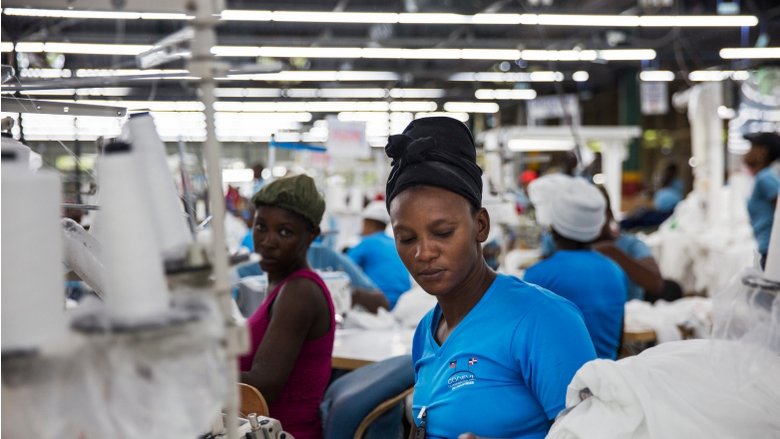Claudia Morgan López, a Mexican entrepreneur, started the company called Sumetlum Aceites Esenciales [Sumetlum Essential Oils], which manufactures cosmetics and aromatherapy products, in 2014, when “it was even more difficult to believe that a woman could have a business idea that would be innovative and successful.”
López remarked that she managed to make a way despite “limited access to financing, training, red-tape, and the establishment of business alliances.”
Her experience is not unique in the Latin American and Caribbean region. The data and voices speak clearly for themselves.
The indicators of the World Bank’s gender scorecards, which were used to study 29 Latin American and the Caribbean countries, indicate that progress has been made toward general equality but there are still major challenges.
For example, the proportion of Mexican women who had an account at a financial institution in 2017 was only 33%, as opposed to 41% of the men, both falling below the regional average and that of upper middle-income countries.
The financial sphere for women, apart from the difference in banking, is affected by work opportunities. In Paraguay, for example, although women’s participation has increased above the regional average in the last two decades, almost 40% of Paraguayan women have informal or vulnerable jobs. In fact, some months after the start of the pandemic in 2020, 20% of Paraguayan women had lost their jobs, in comparison to 7% of men. This indicates vulnerabilities that specifically affect women.
Andrea Segura, cofounder of Alfi, an application for learning about financing by playing a game, which is popular in Mexico, Peru, and Chile, indicated that although “entrepreneurship is not a gender matter,” in her case, “from the start of the venture she had to build relationships within the entrepreneur ecosystem, but because she is a woman, she was very often excluded from participating in some activities that were attended only by men.”
That reduced female participation in certain spheres is seen in Chile, where women have experienced a significant increase in the amount of time dedicated to the raising of children, domestic work, and caregiving, owing to the closure of schools and online learning. As a result, their participation in the labor force fell from 52% to 45% between 2019 and 2020, undoing more than a decade of progress in terms of participation in the labor market.
In Brazil, the post-pandemic recovery for women is even slower and more complex where the increase in the domestic workload and care of family members might explain why in November 2020, one out of every ten working-age women in Brazil was inactive, which is 25 times higher than the rate among men.
What working women experience
“To believe in our potential as women is important and urgent in order to transform our society,’’ states Segura and this will be possible in countries that guarantee frameworks that protect women in various spheres, including in the working environment.
A striking example in the Caribbean is seen in Antigua and Barbuda, where not only are there no mechanisms to prohibit discrimination in the workplace, but neither is any civil or criminal penalty stipulated in the event of sexual harassment. Needless to say, this affects not only female workers but also male workers.
Much of the discrimination experienced by women in the working environment is related to motherhood. In Latin America and the Caribbean, more than half of the economies in the region (19 out of 32) have no legislation that guarantees 14 weeks of paid maternity leave, which is regarded as the minimum time. Only half of the economies guarantee by law some form of paid paternity leave.
Two case studies are Antigua and Barbuda and Dominica. In both countries, women can be fired from their jobs for being pregnant. If they continue working, the employer is not obligated to grant them maternity leave (of at least 14 weeks) or paid paternity leave, nor any other benefit related to the birth of the baby.
In the case of Colombia, women’s opportunities and agency (defined as an individual’s capacity to have resources and to be able to develop his/her potential) are affected by the prevalence of gender-based violence, unpaid care responsibilities, and low levels of education. To improve women's situation, Colombia introduced paid parental leave.
Colombia thus becomes the first economy in the region to incorporate this benefit, with the possibility of both parents sharing 6 weeks of paid leave, in addition to paid maternity leave (12 weeks) and paid paternity leave (2 weeks).
Although the outlook seems bleak for working women in Latin America, progress has been made on all fronts across the length and breadth of the region. López and Segura agree that, while legislation is improving, women must come together to empower each other.
“Creating a community is also important, there are different ways in which to be in contact with each other, to support each other, and move forward,” states Segura. López, for her part, underscores that women should pass on “their leadership to other women, establishing alliances that allow for mutual growth, which ensures that more and more of us as women are promoting equality from our own spaces.”

